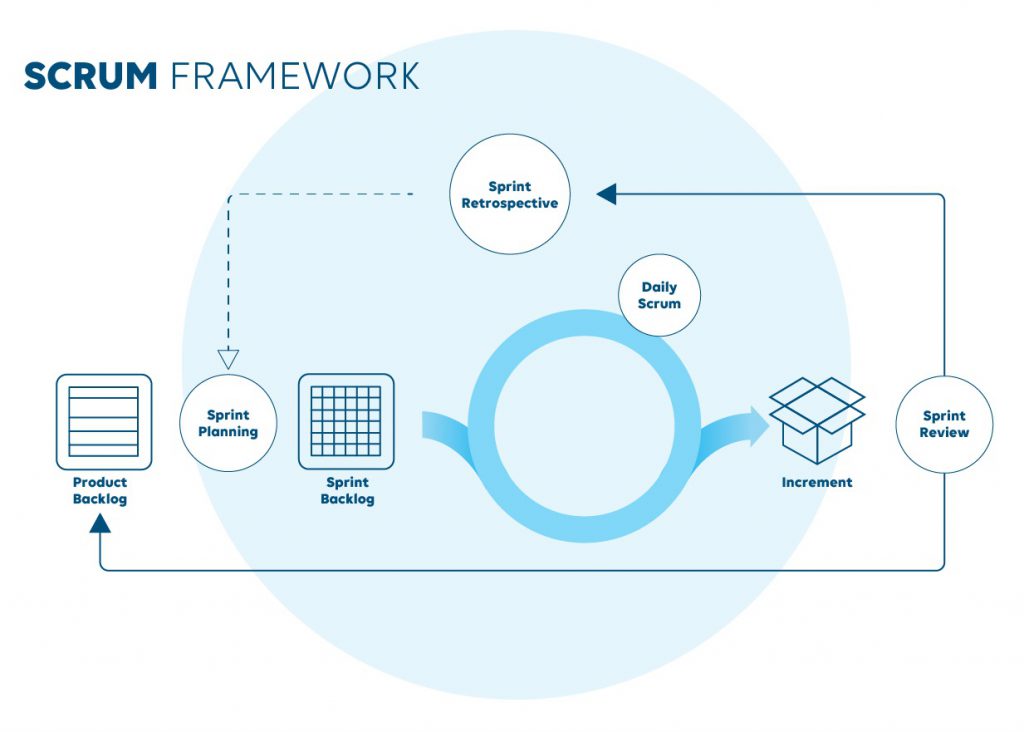Agile Webspace > Methodologies > Scrum Framework
The Scrum Framework
Scrum is a framework that can help teams create, deliver and maintain valuable products in complex environments. It is especially popular in the world of software development, where it originated.
The reason that software development is often considered a complex endeavor is that usually there are a lot of unknowns. Typically it is clear what the problem is that software is supposed to solve, but we still need to figure out what to do, how to do it, and when to do it.
To help deal with this complexity, Scrum relies on iterative, short, fixed-length cycles called Sprints.
Each sprint is preceded by a Sprint Planning meeting, in which the team commits to a Sprint Goal and selects work to achieve that goal.
The sprint ends with a Sprint Review: the entire Scrum team in collaboration with the key stakeholders inspect the potentially shippable increment.
The team also holds a Retrospective, in which they inspect how the last Sprint went with regards to individuals, processes, and tools.
In a Daily Standup meeting, the team inspects their progress towards the Sprint Goal and adapts their work accordingly.

The events described above should make clear that Scrum is characterized by empiricism.
Scrum embraces the three pillars of Empirical Process Control: transparency, inspection, and adaptation. As such, decisions are based on experience rather than upfront planning and making assumptions about unknowns.
More info: https://scrumguides.org/scrum-guide.html
resources we like:
- Opinion piece on very common mistakes companies make when starting their Agile transformation. The risks of becoming a feature factory instead of outcome oriented.
- 10 Common Scrum Myths Debunked - YouTube [12min]
- Retrospective inspirational ideas
- Myth: Having A Sprint Goal Is Optional In Scrum
- Scrum Master In Black - YouTube